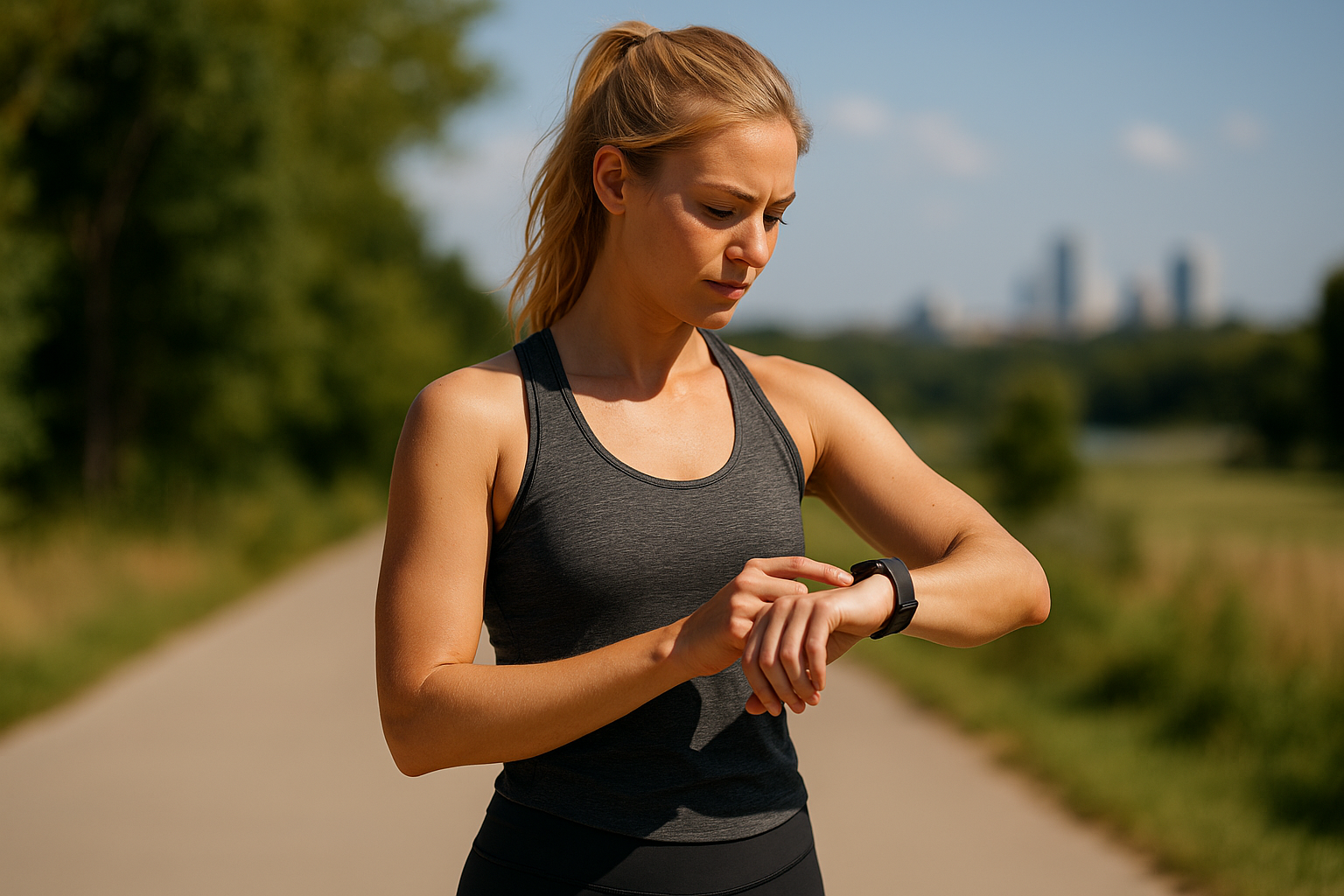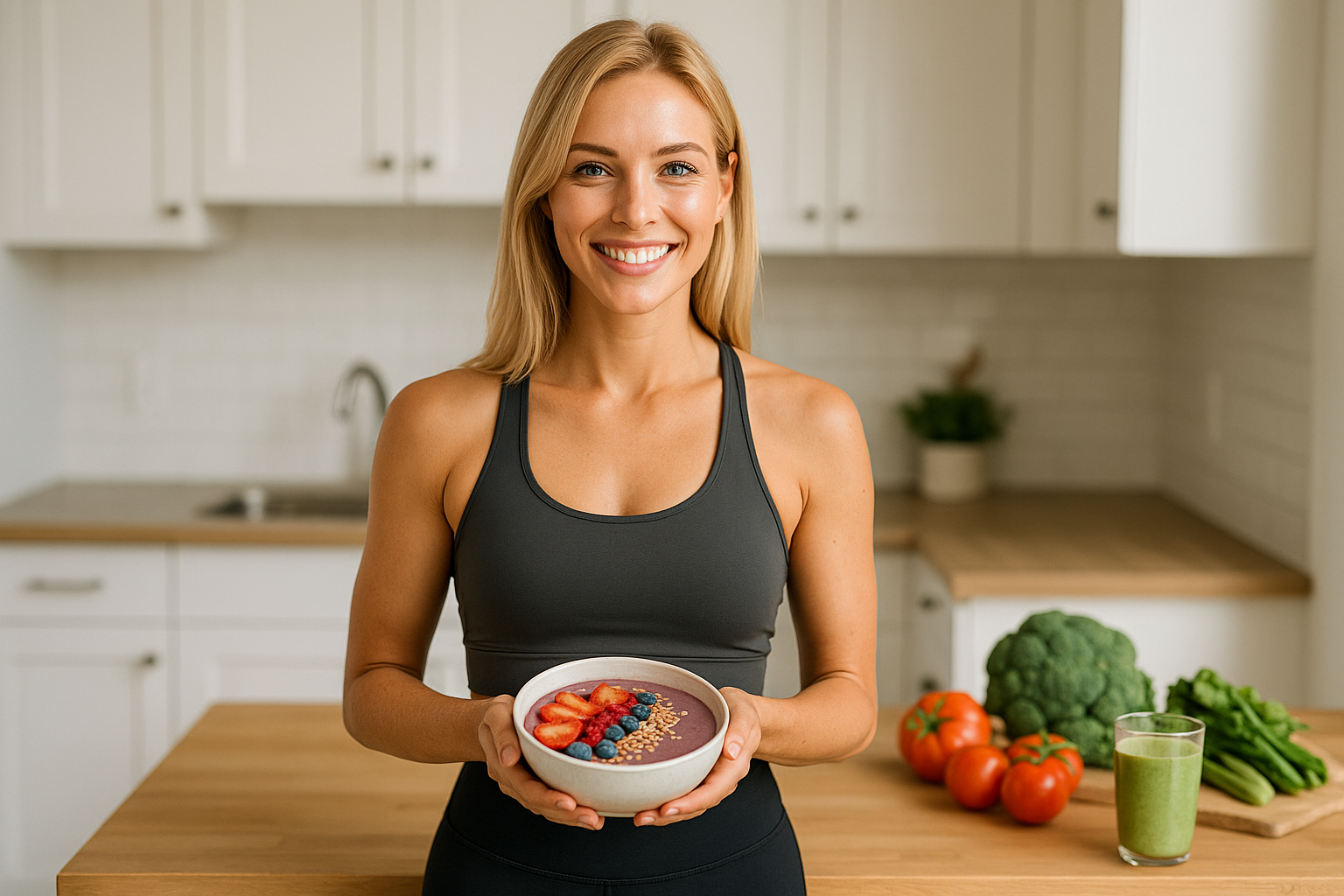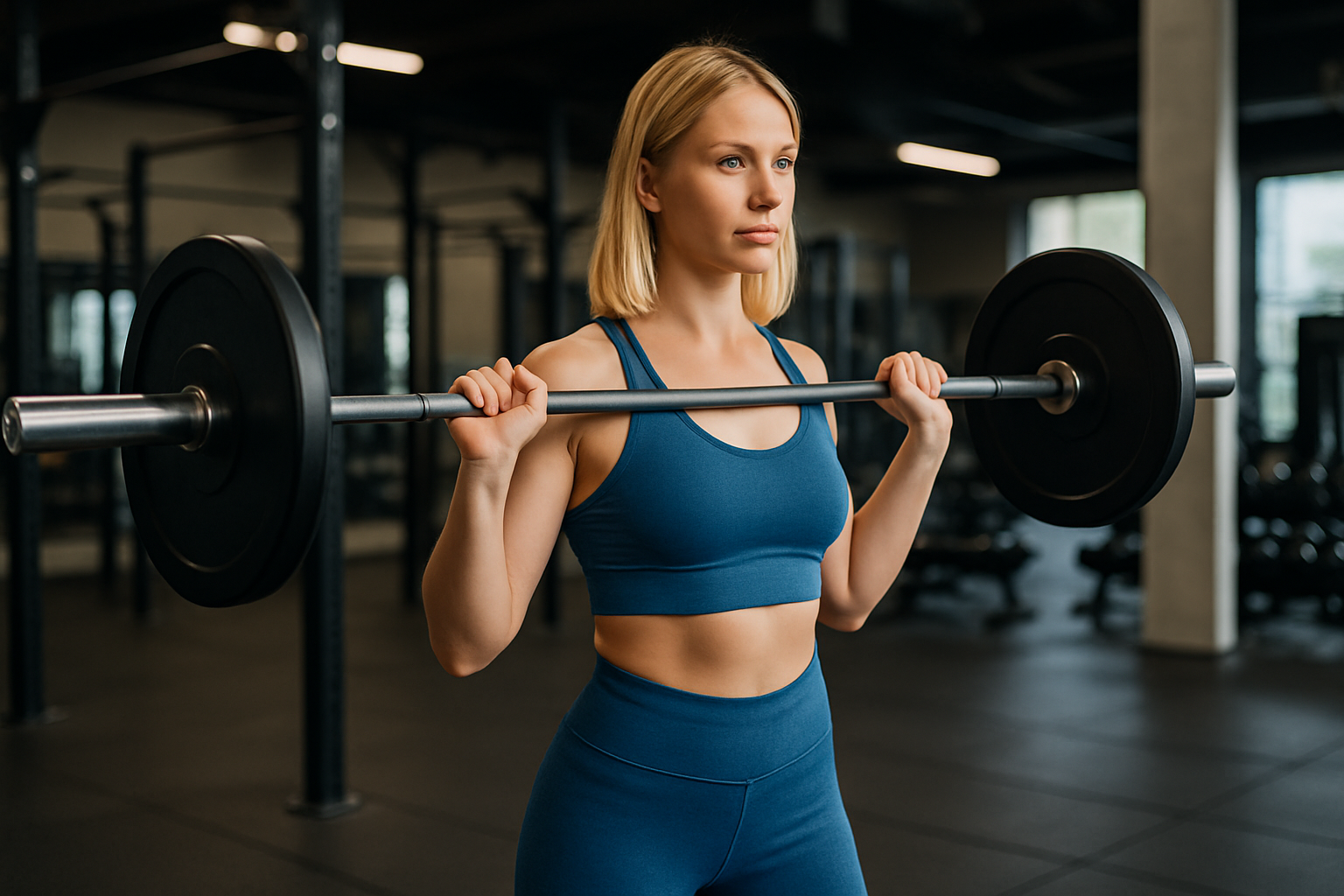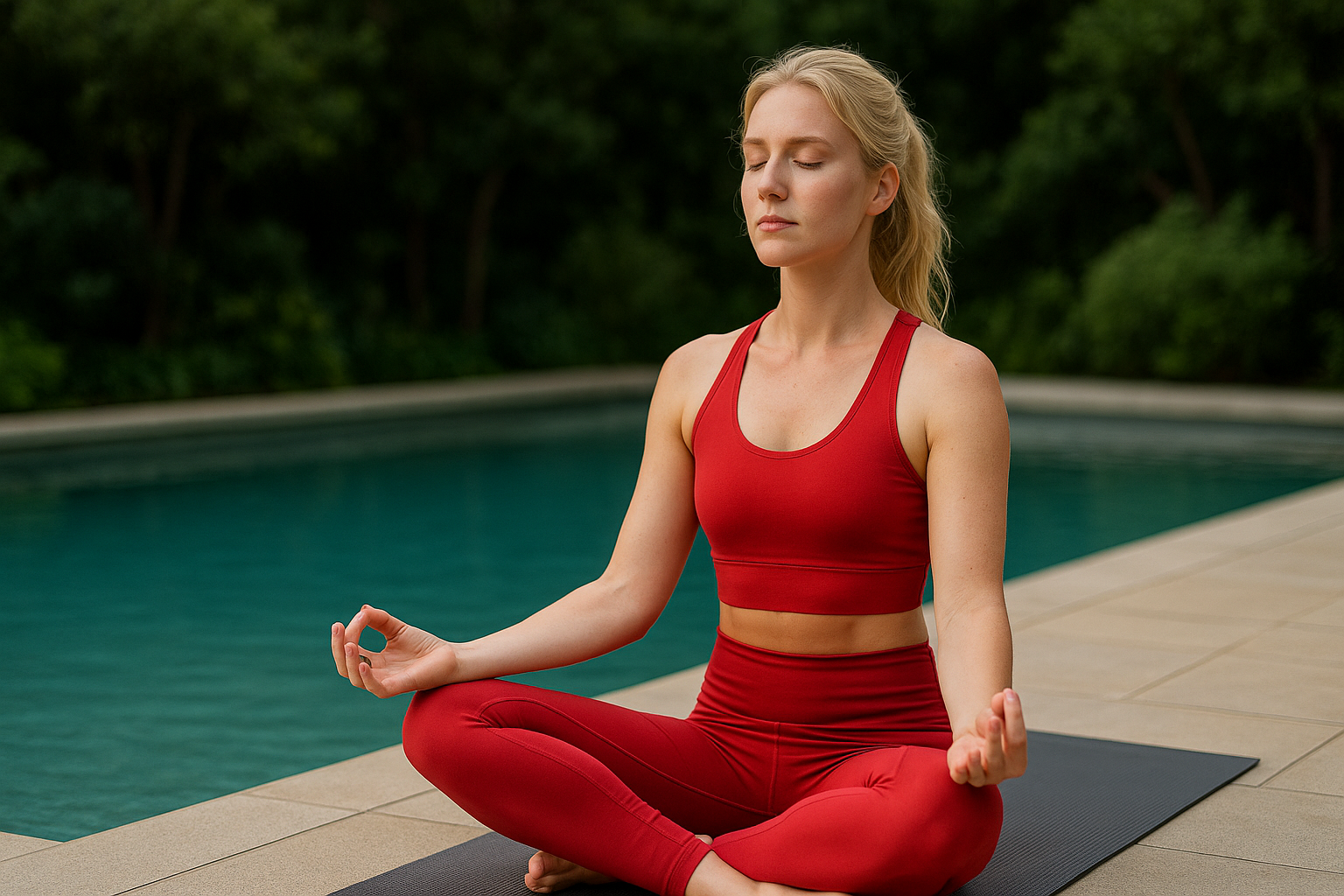Introduction: When You Finally Listen to Your Body
You’ve had those days when everything feels heavy. Your back aches, your mind is racing, and your body doesn’t feel like it belongs to you anymore. You chalk it up to stress, age, or a busy schedule. But somewhere deep down, your body is asking for something different.
That’s where yoga enters.
This practice is more than stretching or breathing deeply. Yoga is a physical and emotional journey that reconnects you with your body in powerful ways. In this guide, you’ll uncover what yoga really does to your body—inside and out—and how it can transform the way you live, breathe, and move.
What Happens to Your Body During Yoga?
Yoga and Your Muscles: Stretch, Strengthen, Stabilize
When you flow through poses, you’re doing more than just moving your limbs. You’re developing strength, flexibility, and body awareness all at once.
- Improves flexibility in major muscle groups like hamstrings, hips, and shoulders
- Builds muscle tone through isometric holds and bodyweight resistance
- Enhances posture by strengthening the muscles around your spine
- Reduces risk of injury by balancing strength and flexibility
Yoga movements engage both large and stabilizing muscles. You’ll feel subtle shifts after just a few sessions as your body becomes more aligned and resilient.
Cardiovascular Benefits: Is Yoga a Real Workout?
Certain styles of yoga go beyond calming breaths. They elevate your heart rate, improve your circulation, and support cardiovascular health.
- Boosts heart rate during dynamic flows like Vinyasa or Power Yoga
- Improves blood circulation, especially during twists and inversions
- Lowers blood pressure through breath regulation and movement
- Enhances heart rate variability, a key marker of heart health
You don’t need a gym or treadmill to support your cardiovascular system. A yoga mat and intentional movement are enough.
Yoga and the Nervous System: Reset from Chaos to Calm
One of the most transformative aspects of yoga is how it affects your nervous system. Each pose, combined with mindful breathing, helps shift your body into a calmer, more regulated state.
- Activates the parasympathetic nervous system, helping you relax
- Lowers cortisol (stress hormone) and reduces physical tension
- Improves sleep quality and promotes deeper rest
- Supports emotional regulation by balancing neurotransmitter levels
By practicing yoga regularly, you train your body to respond to stress with calm instead of chaos.
How Yoga Transforms Your Body Over Time
Immediate Changes You May Notice
In just a few weeks of consistent practice, you may begin to experience:
- Increased joint mobility and ease of movement
- Relief from common aches and stiffness
- Improved digestion due to deeper breathing and twists
- A more stable mood and better stress response
Long-Term Physical and Emotional Shifts
After several months, deeper changes often occur:
- Greater muscle tone and physical strength
- Postural alignment and reduced chronic pain
- Strengthened immune function and lower inflammation
- More energy, mental clarity, and emotional resilience
Your body becomes more efficient, more balanced, and more connected to your mind and breath.
Supporting Your Yoga Practice with Nutrition
Why Nutrition Enhances Your Practice
Yoga helps you become more in tune with your body. As your awareness grows, so does your need to fuel it properly.
- Protein helps repair and build muscle after challenging sessions
- Anti-inflammatory foods support joint health and mobility
- Proper hydration and minerals reduce fatigue and cramping
- Whole, plant-rich foods complement yoga’s detoxifying effects
The food you eat either fuels your growth or slows your recovery. Nutrition and yoga go hand in hand.
Post-Yoga Smoothie for Recovery
Here’s a simple, nutrient-rich smoothie ideal for post-practice recovery:
| Ingredient | Quantity | Benefits |
|---|---|---|
| Spinach | 1 cup | Rich in iron, calcium, and antioxidants |
| Banana | 1 medium | High in potassium and muscle support |
| Greek yogurt | ½ cup | Provides protein and gut health benefits |
| Chia seeds | 1 tbsp | Full of omega-3s and fiber |
| Almond milk | 1 cup | Hydrating and low in calories |
| Honey (optional) | 1 tsp | Natural source of energy and antioxidants |
Blend all ingredients until smooth and enjoy within 30 minutes of your session for optimal recovery.
Yoga and Your Internal Systems
Digestive Support
Yoga promotes healthy digestion through gentle, natural movement.
- Twisting poses massage the abdominal organs
- Belly breathing reduces tension in the digestive tract
- Forward folds stimulate the parasympathetic nervous system, easing digestion
You’ll likely notice reduced bloating, better elimination, and fewer digestive disruptions.
Hormonal Balance
Yoga can positively influence hormone levels and endocrine function.
- Stimulates the thyroid gland in poses like Shoulder Stand and Fish
- Reduces adrenal fatigue symptoms by lowering stress hormone levels
- Supports reproductive hormone regulation, easing PMS or menopausal symptoms
With regular practice, your hormonal system becomes more stable and responsive.
Immunity and Inflammation
Chronic inflammation weakens the immune system. Yoga addresses both.
- Inversions help lymphatic drainage, clearing toxins from the body
- Breathwork oxygenates the blood and supports cellular repair
- Regular practice lowers markers of inflammation such as CRP
The result is a body that not only moves better but defends itself more efficiently.
What Types of Yoga Are Best for Your Body?
Hatha Yoga
- Great for beginners
- Slower pace, focus on posture and breath
- Enhances flexibility and builds awareness
Vinyasa Yoga
- Continuous movement linked to breath
- Builds strength, coordination, and stamina
- Ideal for those wanting a more active workout
Yin Yoga
- Long-held poses for deep muscle and fascia release
- Increases flexibility and reduces physical tension
- Supports emotional release and stillness
Restorative Yoga
- Passive, supported poses using props
- Promotes deep rest and recovery
- Perfect for stress, trauma, and burnout
How to Choose the Right Style for You
- For weight loss: Vinyasa or Power Yoga
- For flexibility: Yin or Hatha Yoga
- For emotional healing: Restorative Yoga or Yoga Nidra
- For strength and tone: Vinyasa or Ashtanga
You can switch styles based on your daily needs—some days are meant for movement, others for stillness.
Common Myths About Yoga
“You Have to Be Flexible”
Truth: You don’t start flexible—you become flexible through practice. Everyone begins somewhere, and yoga meets you where you are.
“Yoga Isn’t Real Exercise”
Truth: Certain yoga styles provide a full-body, cardiovascular workout that builds endurance and muscle.
“Yoga Is Only for Women or the Spiritual”
Truth: Yoga is for every body, regardless of gender, age, or belief. It’s a science-backed, physical discipline rooted in healing and function.
FAQ: What Yoga Does to Your Body
Does yoga help with weight loss?
Yes. Active styles like Vinyasa increase calorie burn and muscle tone. Additionally, yoga lowers cortisol levels, which helps reduce belly fat.
How quickly can you feel changes from yoga?
You might notice flexibility, sleep improvements, and reduced stress within 1–2 weeks. More significant body transformations occur after 6–8 weeks.
Is yoga good for mental health?
Definitely. Yoga reduces anxiety and depression by regulating your nervous system and increasing feel-good chemicals in the brain.
Can yoga replace other forms of exercise?
It depends on your goals. Yoga improves strength, flexibility, and endurance. For muscle hypertrophy or intense cardio, it may complement rather than replace other workouts.
What type of yoga is best for healing?
Gentle Hatha, Restorative, and Yin Yoga are best for physical and emotional healing. They activate the parasympathetic nervous system and encourage recovery.
Conclusion: You Don’t Need to Be Perfect to Begin
The most important part of yoga isn’t the pose—it’s the presence. You don’t need a perfect body, expensive gear, or years of experience. You simply need a willingness to show up.
Each session is a conversation with your body. And the more you listen, the more your body responds—with strength, ease, clarity, and peace.
Yoga doesn’t change who you are. It reveals the version of you that’s been waiting beneath the noise.
Call to Action
If you’ve been thinking about starting yoga, now is the perfect time. Roll out your mat. Begin with a beginner-friendly video or visit a local class. Even five minutes a day can lead to powerful transformation.
Have a question about starting your yoga journey? Share your thoughts in the comments or reach out for personalized guidance. Your path to a stronger, more peaceful body begins today.







